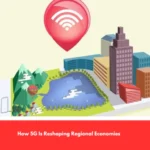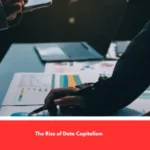Re-skilling Workers for the AI Economy. Kate, a product designer for an automotive manufacturing company, signs up for an online course as she seeks to develop her career in product engineering. After completing the core modules, she completes an assessment conducted via a chatbot. This test reviews her skills in the subject and provides her with learning materials that will give her access to more advanced modules in her career path. After acquiring advanced engineering expertise, Kate returns for a re-assessment and receives a top grade. The virtual interface informs Kate’s Human Resources Department via email that she is beginning the next step.
This scenario is likely to be her life situation for most jobs in the future. The World Economic Forum’s Future of Jobs 2025 Report examined the technological, social, and economic trends that will shape the lives of the future. The report revealed that the workforce is aging and shrinking simultaneously in high-income economies, but growing in low-income economies. Cutting-edge technologies such as artificial intelligence, robotics, and automation are also creating new opportunities for certain jobs, such as business analysts, while eliminating others, such as warehouse operator.
Anticipating the changing nature of work

Related Macro Trends will continue to change the dynamics of the global labor market by 2030. In fact, some 79 of 132, the Future of Jobs Report indicates, nearly 39% of currently required skills will be transformed or rendered obsolete by 2025-2030. This survey collected information from more than 1,000 companies worldwide across 22 industries and 55 economies, employing more than 14 million workers. The bright side the unfinishable skill has continued to decline with the advent of training, retraining, reskilling, and upskilling programs. It increased from 57% in 2020 to 44% in 2023, according to the report.
The skills gap is an existential risk for companies and also for a diverse group of intergenerational workforces. Employers must have appropriate competency-based training to accommodate growth within their business. At the same time, employees must develop new skills to take on more responsibilities and design their career paths. Most companies have talent development programs because it is the only way to boost employability, increase skills for high-value positions, and rotate teams based on the demand for skills within the organization.
Role redesign, reskilling and transferrable skills

AI is coming to boost learning and development plans. Algorithms AI are evolving and becoming more complex in terms of functionality and capabilities. AI systems apply general cognitive intelligence to automatically perform tasks and solve problems in various fields, including education. Generative AI models are pre-trained with large sets of user-defined data for consumption in each domain, generating textual, auditory, and visual content that resembles human work.
Autonomous (or agentic) AI takes this concept a step further by combining prior knowledge and patterns with natural language and business contexts, making sound decisions, acting without human intervention, and achieving objectives. Autonomous AI enables HR professionals to prioritize new skills during interviews and promotions. It also facilitates tailored training development plans to develop specific business skills over the long term.
Reframing tech talent shortages

Likewise, AI-based technologies achieve learning gains by encouraging active behavior and cognitive engagement with the course, which reinforces learning. Furthermore, information recall and transfer are more effective when learning instinctively. Most importantly, AI-powered learning tools not only teach basic and fundamental technical skills, but also teach soft skills such as critical thinking, cognitive flexibility, and adaptability. This is according to Pearson’s 2024 AI for Higher Education Year-End Report, based on research conducted by Pearson in conjunction with Morning Consult.
Users of the Pearson eTextbooks AI Cycle+ improved their cognitive skills and critical thinking, while engagement increased fourfold. As increasing roles and responsibilities for workloads in industries across all industries require a mix of human skills. Social and interpersonal skills are key. On the other hand, AI enhances the capabilities of new and less experienced employees in the knowledge sector. It offers an independent and autonomous work style for specialized professionals.
Conclusion

The work environment is expanding to include external workers, professional service providers, crowdsourcing partners, freelancers, part-time employees, and seasonal workers. The rise of global digital jobs, according to a report by the World Economic Forum, predicts that remote labor mobility will reach 90 million employees by 2030. The employee profile in this ecosystem seeks autonomy and flexibility regarding work location and hours. Autonomous or agentic AI helps us overcome new challenges and take advantage of the new opportunities we are finding in this ecosystem.
It contributes to shaping the way we should design tomorrow’s work and to move away from areas of value that no longer exist in the evolving market. Autonomous AI brings together the best of both worlds personalized maximization and scalability into the learning process. AI technicians launch deep learning experiences, optimize educational trajectories, and predict knowledge gaps, enabling educators and trainers to support and improve outcomes across skills and competencies, topics, and professions.





